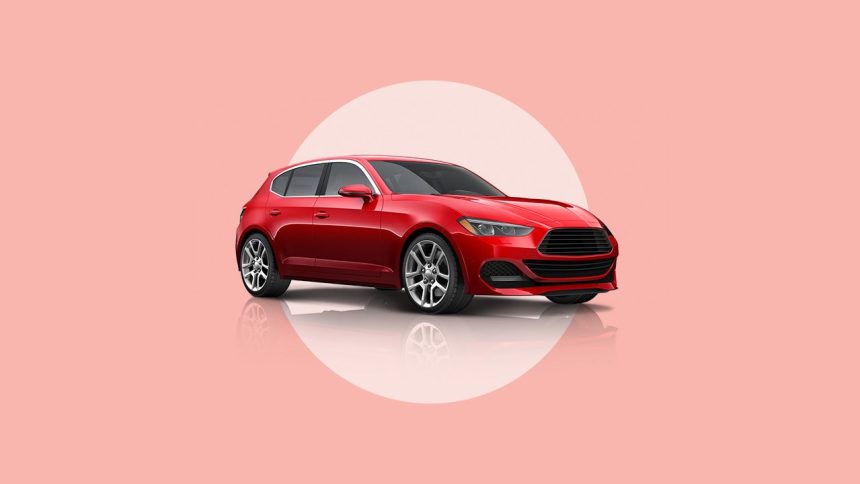Photography by Getty Images; Illustration by Bankrate
Whether you’re shopping for a new vehicle or discussing car insurance myths, you might wonder if red cars are more expensive to insure. The short answer is no, red cars do not cost more to insure. Insurance rates are based on a multitude of factors — but the color of your vehicle isn’t one of them.
Do red cars cost more to insure?
As a red car owner, you may have heard that your vehicle’s color could lead to higher insurance premiums. However, the truth is the color of your car, even if it’s red, doesn’t impact your insurance costs. Most insurers don’t even ask about your car’s color when determining premiums.
Instead, car insurance companies consider several other factors specific to you and your vehicle that could impact your risk profile. These include your vehicle make, model and year, which inform your car’s value. How many miles you drive annually and whether or not you’re commuting also matter, as an indicator of the time you spend on the road. Insurers view your driving record — or your past behavior behind the wheel — as a potential predictor of future behavior. And your ZIP code matters in relation to things like population density and crime stats (namely theft and vandalism).
Depending on the laws where you live, your age, gender and credit may inform your rates, as well, based on a statistical analysis of drivers that match your demographic profile.
That said, if you’re driving a red car that’s a custom or classic car, you might pay more for coverage because the vehicle itself is more expensive to insure, or the custom paintwork might merit additional coverage (like a custom parts and equipment endorsement).
Do red cars get pulled over more often?
There’s no data showing that red cars get pulled over more often by law enforcement than any other color vehicle. That’s because law enforcement does not target vehicles by color. Instead, they pull over drivers who are exhibiting unsafe driving habits, like speeding or weaving in traffic, or those who have a vehicle issue that needs to be addressed, like having a brake light out.
Further dispelling this myth, statistics compiled by law enforcement agencies across the country show that white cars are the most ticketed vehicle by color. Red cars are the second-most ticketed.
Where does the red car myth come from?
Rumors can spread easily, but no one has been able to trace the origin of the red car myth.
Loretta Worters of the Insurance Information Institute notes that, “For years there has been this notion that color plays a significant part in calculating insurance premium costs, many people believing that red cars cost more to insure because they’re linked to aggressive driving or speeding.”
“[I]nsurers have no interest in the color of a car, but they are interested in knowing if you have had any previous car accidents, the number of miles you drive annually and where you live.”
— Loretta Worters, vice president of media relations, Insurance Information Institute
How do other vehicle features impact car insurance rates?
While the color of your car doesn’t influence your insurance rates, other features of your vehicle can. These include:
- Vehicle age: Insurance for newer cars often costs more because of greater replacement costs and the complexity of their features.
- Size: Larger vehicles may warrant higher premiums due to the potential for causing more damage in accidents. However, they could also provide better crash protection, potentially lowering post-accident medical expenses.
- Trim level: More luxurious trim levels featuring upgrades like sunroofs, leather interiors and cutting-edge tech could lead to increased premiums due to higher repair and replacement costs.
- Body design: Sporty cars or coupes usually carry higher insurance costs than sedans or minivans due to an assumed higher accident risk.
- Safety features: Vehicles equipped with advanced safety features may result in lower premiums.
- Repair costs: Luxury and imported cars with pricey parts and repair costs could lead to more expensive insurance costs.
Tips for lowering your car insurance premium
While there are a number of factors that determine how much your insurance will cost, there are ways you may be able to lower your car insurance costs:
- Shop around: Comparing car insurance rates can be a highly effective way to find a low price. Each car insurance company has its own method for setting your rate, so the quotes you receive are likely to vary. Gathering a handful of quotes for the same coverage types and policy limits can help you identify the company offering the best deal for your situation.
- Take advantage of discounts: Most insurance companies have discount opportunities to help policyholders lower their rates. Common discounts include savings for bundling auto and home or renters insurance, getting good grades, working in certain professions or being a member of certain groups and paying your premium in full instead of in monthly installments. Ask your insurance agent for more information.
- Evaluate your policy before your renewal date: Before your policy comes up for renewal, you may want to read through it to make sure you’re not paying for coverage you do not need. For example, maybe you paid down your car loan and no longer need gap insurance.
- Raise your deductible: If your deductible is currently low, you’re probably paying a higher premium. By raising your deductible to an amount you can still comfortably afford, you will most likely see your premium drop.
- Boost your credit: If you live in a state where credit can be considered, taking steps to build credit can help lower your insurance costs. Bankrate found that drivers with poor credit pay an average of $4,717 per year for full coverage, while those with average credit pay $2,670.
- Drive less, if possible: Lower vehicle mileage can translate to lower insurance costs, so taking steps to drive less can help you save money. If you live near a co-worker, consider carpooling to work. Or, if you live somewhere with a robust public transportation system, you might try taking the bus on occasion.
The bottom line
While the myth of red cars costing more to insure may persist, the truth is that it is simply not a factor in the insurance process. Insurers consider many things when setting rates, from your vehicle’s make and model to your driving history, annual mileage and more — but the color of your car is insignificant in their eyes.
Frequently asked questions
Read the full article here
















